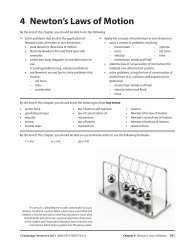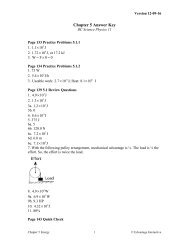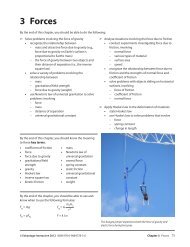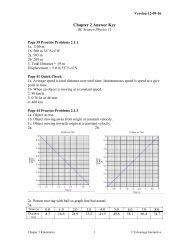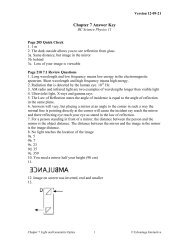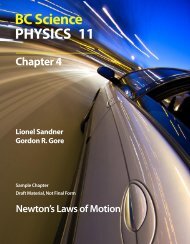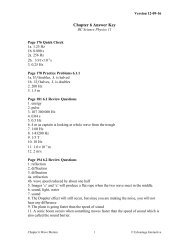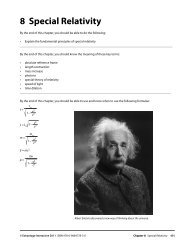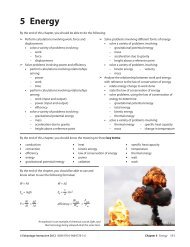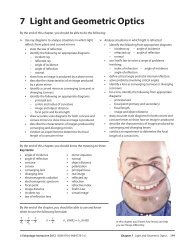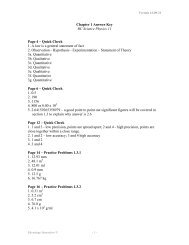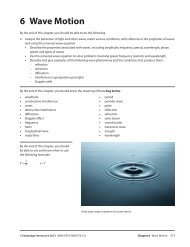2 Kinematics - BC Science Physics 11
2 Kinematics - BC Science Physics 11
2 Kinematics - BC Science Physics 11
You also want an ePaper? Increase the reach of your titles
YUMPU automatically turns print PDFs into web optimized ePapers that Google loves.
2.3 Uniform Acceleration<br />
Warm Up<br />
In your own words, describe the difference between average velocity, initial velocity, final velocity, and a change<br />
in velocity.<br />
Graphing<br />
Acceleration<br />
In a situation where the speed of a moving body increases or decreases at a uniform rate<br />
the acceleration is considered uniform. This motion can be graphed on a speed vs. time<br />
and will be linear (Figure 2.3.1). Since speed is the dependent variable, it is plotted on the<br />
y-axis. Time, the independent variable, will be on the x-axis.<br />
��������������<br />
� �<br />
� �<br />
�<br />
�<br />
����� ��<br />
��������������<br />
�����������<br />
54 Chapter 2 <strong>Kinematics</strong> © Edvantage Interactive 2012 ISBN 978-0-9864778-3-6<br />
����� ���<br />
Figure 2.3.1 This graph shows speed changing at a uniform rate.<br />
�<br />
� �����������������<br />
����������������������<br />
� ���������������<br />
The y-intercept for the speed-time graph is b = v0 , where v0 is the speed of the<br />
object at time t = 0. In Figure 2.3.1, the initial time is zero and the final time is t, so the<br />
time interval is simply ∆t = t – 0 = t.<br />
The slope of the graph is m = ∆v<br />
= a, since acceleration is change in speed divided<br />
∆t<br />
by change in time.<br />
If a = vf – v0 t<br />
Then at = vf – v0 and<br />
v f = v 0 + at<br />
This is a general equation for any object that accelerates at a uniform rate. It says<br />
that the final speed of the accelerating object equals the initial speed plus the change in<br />
speed (at).<br />
(1)



